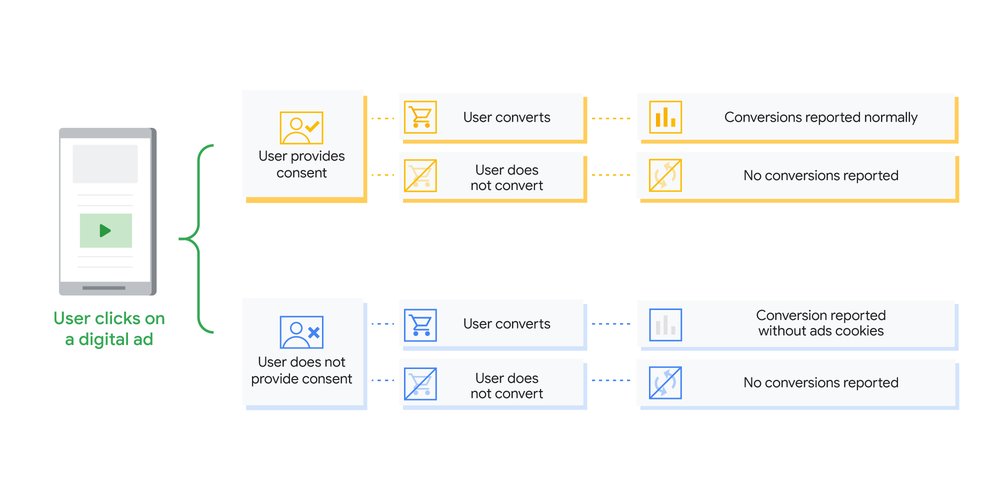
What “cookieless tracking” really means, and how you can prep your marketing programs to thrive in the new digital world
The digital landscape is evolving in real-time. And it’s about time.
While calls for increased user privacy across the internet were certainly nothing new, one of the biggest steps towards that reality started back in August 2019 when Google announced their Privacy Sandbox initiative to “fundamentally enhance privacy on the web”. The following January, Google backed that up and announced they’d be phasing out support for 3rd-party cookies by 2022.
Unsurprisingly, that’s also when the digital advertising world plunged into chaos trying to figure out how going cookieless would impact their marketing programs. Cookies have been the backbone of our digital measurement since the mid-90s after all, so learning that a major disruption to our tracking was only 2 years out sent the whole industry into a tizzy as it scrambled to adjust.

And if losing 3rd-party cookies wasn’t enough to dampen the measurement mood, April’s iOS14.5 update is also embracing a privacy-first approach to user data with their recently released App Tracking Transparency (ATT) feature. For those not yet aware, ATT requires all apps on a user’s phone to ask for explicit consent before they can track their activity across the web and other apps. Naturally, this large drop-off in visibility will fundamentally impact user tracking and change how marketers perceive value and ROAS on Apple devices.
Between iOS14.5 and Google going cookieless, how’s an advertiser supposed to track and target users across the web or collect that juicy behavioural data now?
A New Digital Reality
Amidst all the hubbub and chaos, the main question on most marketers’ minds has been “How are we going to replace all this lost user data and visibility?” But maybe we got it all wrong. Maybe the question we should be asking is “Do we really need that level of granularity in our user data?”
Let’s take it one step further: “Should we even be collecting that kind of user data in the first place?”
We need to reframe our perspective towards conventional, cookie-based tracking. And that new perspective should be one that puts the user and their privacy needs first. Because make no mistake, people are more frustrated with and skeptical of advertising than ever:
- 70% of users feel they can’t protect their privacy online due to excessive data collection
- 42% of consumers distrust brands, with another 69% distrusting advertising altogether
So it’s no surprise why users are embracing the changes that help them regain control over their own data. But since it’s long been clear users hate cookies and their lack of online privacy, as marketers we must be able to listen to, understand, and respond to their concerns. How else is our industry supposed to thrive in the new digital world?
Measurement Through Cookieless Tracking
The modern customer journey is already so messy and nonlinear, with users bouncing back and forth between multiple interconnected channels and touchpoints while constantly jumping between exploration and evaluation mindsets. Good luck making sense of all those different touchpoints yourself without the help of AI-powered (usually quite expensive) marketing automation tools.
So how much of the user data we’re capturing is actually useful to us? How much of that data do we actually use to improve our targeting and create better ads for our users? My old Director had a great answer to those questions:
All advertisers collect data, the best advertisers know what data to collect.
In other words, only ask for and collect the data you’re actually going to use. Anything more just brings needless complexity to your life while adding more friction to the user journey, neither of which will help your marketing programs bring in better leads or drive more sales.
And think about it – there’s a big difference between measurement (i.e. the logging and subsequent analysis of specific key metrics and events) and user tracking. We NEED to be able to measure the efficacy of our programs in terms of KPI to determine what is or isn’t working, and that isn’t changing in the privacy-first world. That’s still within our control. What we DON’T need is hyper-specific data about every move a user makes or where they went to high school (granted that last one’s a bit hyperbolic, but I digress). Especially if much of that data is sitting around unused or siloed away.

The ability to track and capture exceedingly granular bits of user data (see: irrelevant, unnecessary) is what’s changing, not our ability to measure how users engage and interact with our websites. Any actions they take on your website will still be trackable through Google Analytics or your measurement platform of choice – though attributing those actions might get a little trickier.
At the end of the day, the biggest impact these privacy-driven changes will have is on our ability to attribute bottom-line results to different marketing channels. Luckily, these same channels offer a couple options to help close any discrepancies and bring some of that attribution back:
- One of the ad world’s biggest concerns leading up to iOS14.5 was how the new ATT protocol would interfere with their Facebook pixels (along with all the custom lookalike / remarketing audiences and conversion tracking that rely on it) if every Apple user actively decided to opt out of tracking. So to keep ATT’s attribution disruption to a minimum, Facebook rolled out a new Aggregated Event Measurement (AEM) feature to specifically measure web events from iOS14.5 users, even if they opted out of receiving tracking. The protocol allows up to 8 separate events per domain for conversion optimization, and will continue evolving to keep up with upcoming browser changes.
- AEM, in tandem with their Conversions API tool, will help advertisers win back some visibility on Facebook while still respecting users’ privacy concerns (well, at least the ones using Apple devices).
- While Google may have ushered in much of the chaos surrounding cookieless tracking, they aren’t ditching cookies entirely either. They’ll continue offering 1st-party cookies through the global site tag and GTM, which will still be limited to users on your site only. And as of this month (May 2021), this 1st-party cookie will get updated functionality that lets you track instances where a user might engage with multiple ads before converting, granting us more visibility into how different touchpoints can steer users towards conversions.
- What’s even cooler is that they’re also offering advanced AI-driven conversion modelling through Consent Mode to fill in the blanks and recover up to 70% of lost attribution when users opt out of or withhold cookie consent. You’ll just need to rejig some of your tag settings first, then you’re on your merry way.

How to Thrive in a Cookieless Future
I’ve rambled on enough about the high-level impact of iOS14.5 and cookieless tracking writ large, so let’s get to the point already – how can you start adjusting your marketing programs to succeed in the new privacy-first digital world?
I’m so glad you asked:
Invest in your own site’s web analytics, tracking and 1st-party data
The end of 3rd-party cookies means shoring up your website and Sales pipeline measurement has never been more valuable. Not only is this a fundamental pillar to any well thought out marketing program, but what better way to close any attribution gaps than with your own hard-earned data? Just make sure you’re offering fair value in exchange for that 1st-party data. After all, users need to understand what they’re getting in return for their data before they’ll consider trusting you with it.
Invest in the platforms and channels that give you the most visibility and attribution possible
Once your tracking and analytics is up to snuff, it’s time you did the same with the channels you’re spending your marketing dollars on. Choosing the channels and platforms that most closely align with your business objectives is crucial, but you also need to consider which of those channels and platforms gives you the most visibility into the results your marketing dollars are (or aren’t) generating. And while I mainly touched on Google and Facebook here, Search and Social are just the tip of the paid media iceberg. So do your due diligence and find the right channel mix that delivers both bottom-line business results AND knows how to attribute it.
Refocus on the value your products and services create
Here’s another one you should already be doing, but updating your messaging and targeting to be as contextually relevant as possible will go a long way towards helping your programs succeed in this new digital landscape. Messaging should focus on calling out precisely why your solutions are the right fit, rather than simply relying on hyper-personalized ads (i.e. “creepy”) that seemingly know users better than they know themselves to do all the heavy lifting for us – that’s just lazy marketing.
Ads don’t need to be hyper-personalized to work. But they do need to offer real, tangible value to motivate and compel users to act.
I don’t believe the shift to cookieless tracking will be as big a deal as it’s blown up to be. What I do believe, however, is that the recent privacy-first digital changes creates tremendous opportunities for marketers to not only shore up their programs and adopt better data practices, but to regain user trust at a fundamental level too. It’s quite clear the users and customers we serve have been none too pleased with their lack of anonymity on the web. So isn’t it time we evolved our data collection practices to suit the new digital landscape and respect our customers’ burning desire for more privacy?
I think it is. And seeing as we still have all the tools we need to thrive in a cookieless future, I think it’s time we started meeting our users in the middle with digital measurement that actually respects their privacy needs.
And putting users’ needs first? That’s just what great marketers do.
Much of my ramblings here are just wild speculation because so many of these privacy-first changes are either brand new or haven’t taken effect yet. So I could be speaking prophetically here, or I could just as easily be speaking utter nonsense. Either way, I’m curious to hear what your thoughts are about how marketers can navigate this new digital landscape.
You know me – I’m always happy to talk shop.
